Spotify Camp Nou
| Capacity | 45 401 |
|---|---|
| Country | Spain |
| City | Barcelona |
| Clubs | FC Barcelona |
| Inauguration | 24/09/1957, FC Barcelona – Team of Warsaw 4–2 |
| Construction | 1954–1957 |
| Renovations | 1980–1982, 1993–1994, 1998 |
| Design | Francesc Mitjans Miró, Josep Soteras Mauri in cooperation with Lorenzo García Barbón |
| Address | Avinguda Aristides Maillol, s/n, 08028, Barcelona |
Advertisement
Spotify Camp Nou – stadium description
Camp Nou in brief – what’s it all about?
The famous Camp Nou is one of the most recognizable stadiums in the world. It is the largest football arena in Europe, and its home team, FC Barcelona, ranks among the most renowned and decorated clubs on the planet.
Fans of FC Barcelona, known as the Culers, can turn Camp Nou into a true cauldron of passion, especially during the legendary matches against Real Madrid (El Clásico). Before each game, players are welcomed by the club anthem, Cant del Barça, sung by thousands of supporters.
The stadium has hosted matches in the European Championship, World Cup, and Olympic Games, as well as the memorable 1999 UEFA Champions League final. Beyond football, Camp Nou has also been a venue for major concerts and other events. Due to the strong association of Barça fans with Catalan identity, the Spanish national team rarely plays at Camp Nou.
Opened in 1957 as the club’s seventh home ground, the stadium originally had two full tiers of seating. Ahead of the 1982 World Cup, a third tier was added, gradually increasing in height as it moved away from the main stand.
Since 2022, a major redevelopment has been underway. A completely new third tier is being built, pushing the stadium’s capacity above 100,000. The stands will be fully covered, and the exterior will receive a more striking appearance. The project is scheduled for completion by the end of 2027.
What were FC Barcelona’s first grounds?
The first home of the club, founded at the end of 1899, was a pitch inside the Bonanova cycling track. The team then played at the pitch next to the Casanovas Hotel, followed by Camp de la Carretera d'Horta and Camp del Carrer Muntaner. None of these venues hosted the team for more than a few years.
In 1909, Camp del Carrer Indústria was opened, becoming the first stadium owned by FC Barcelona. At this ground, the club celebrated its first Copa del Rey triumphs and won numerous Catalan championships.
During the period at Camp del Carrer Indústria, the team’s fans became popularly known as the “Culers” (from the Spanish word culo, meaning buttocks), as supporters would fill the stadium, sitting atop the surrounding wall, showing a row of backsides to passersby outside. This stadium also featured the first football floodlights in the country.
In 1922, a new FC Barcelona stadium was inaugurated: Camp de Les Corts. In 1929, the club joined the newly formed nationwide Primera División, winning the league in its very first season. Overall, during the period at Les Corts, the team claimed six Spanish championships.
Initially, the stadium could hold 25,000 spectators. Although its capacity eventually reached 60,000, this was still too small for the rapidly growing club, prompting the construction of an even larger stadium.
How was Camp Nou built?
The land for the club’s new, seventh stadium was purchased over 1 km west of Camp de Les Corts. On 28 March 1954, a ceremonial procession moved from the old stadium to the newly acquired site, followed by the ceremonial laying of the cornerstone in front of a large gathering of spectators.
Initially, however, little happened on the construction site, as most efforts were focused on designing the new arena. The main architects were Francesc Mitjans Miró (a cousin of the then-club president, Francesc Miró-Sans) and Josep Soteras Mauri, in collaboration with Lorenzo García Barbón.
On 11 July 1955, a construction contract was signed with the main contractor, Ingar SA, which undertook to build the stadium within 18 months for 66.62 million pesetas. The funds came mainly from club members, known as socios, who purchased bonds and season tickets for periods of up to five years.
Construction costs, however, far exceeded the original budget, ultimately reaching 288 million pesetas. The club met its financial obligations, although it incurred significant debt. The financial crisis was only resolved after the sale of the previous stadium, which initially faced issues due to reclassification of the land – a problem that took several years to settle, partly thanks to the intervention of the Spanish leader, Francisco Franco.
What did the newly opened Camp Nou look like?
The pitch of the new stadium was dug 8 meters below ground level. It was surrounded on all sides by uniform, gently sloping two-tier stands, with the upper tier, supported by a reinforced concrete frame, considerably larger than the lower. On the west side, a narrow third tier was added, topped with a roof covering all levels of the western stands.
The stadium’s initial capacity was 93,053 spectators. During the design stage, plans were also drawn up for further expansion, potentially reaching up to 150,000 seats.
How was the opening match of Camp Nou in 1957?
Legia Warsaw was invited for the opening match, but by decision of the Polish Football Association, a team composed of players from across Poland flew to Barcelona and played under the banner of the Warsaw representative team, wearing jerseys with the Syrenka (the mermaid from Warsaw’s coat of arms). In front of a crowd of 90,000, the hosts won the match 4–2.
Where does the name Camp Nou come from and what does it mean?
The new stadium was initially named simply Estadi del FC Barcelona (FC Barcelona Stadium). This name was confirmed in a club referendum in 1965, although fans had already adopted a simpler term: Camp Nou (“new stadium”). In the 2000/01 season, another vote among club members officially confirmed Camp Nou as the stadium’s name.
How was the stadium of FC Barcelona expanded?
In its early years, Camp Nou underwent relatively few changes, the most notable being the installation of floodlights (inaugurated during a European Cup match against CSKA Sofia on 23 September 1959) and the addition of an electronic scoreboard in 1976.
In preparation for the 1982 FIFA World Cup finals hosted by Spain, the stadium was expanded between 1980 and 1982 at a cost of 1.298 billion pesetas, with a third tier of seating added. Only the west stand, which already had a narrow third level, remained unchanged. The new tier was extended around the rest of the stadium, gradually increasing in height as it moved away from the west stand, reaching its maximum on the east side.
With the addition of the third tier came two new wide scoreboards, installed atop the stands behind the goals. This expansion completed the original 1957 plan. The stadium’s capacity did not reach the initially planned 150,000 but instead grew to 120,000 due to the installation of more seating. During this expansion, VIP areas and press boxes were also added.
Another major renovation took place in 1993–1994, when the lower tier was completely rebuilt, the moat separating the pitch from the stands was removed, and the playing surface was lowered by 2.5 meters. The last standing areas were also eliminated.
In 1998, the stadium received new floodlights and a sound system, as well as a new underground parking area beneath the main stand. The VIP boxes were also refurbished. Due to new regulations, the capacity dropped slightly below 100,000 by the end of the 1990s.
In the 2016/17 season, Camp Nou’s pitch was equipped with a hybrid grass system. Between 2006 and 2009, the stadium underwent the world’s largest seat replacement project.
What did Camp Nou look like before the 2022 redevelopment?
Prior to the redevelopment that began in 2022, Camp Nou had a capacity of 99,354 spectators, making it the largest stadium in Europe and one of the largest in the world. The seats were colored in the club’s signature shades – maroon (tiers I and III) and blue (tier II). On the west stand, the seats formed the inscription “FC Barcelona,” while the opposite stand displayed the club’s motto: Més que un club (“More than a club”).
The stands were divided into three tiers, with the main stand covered by a roof. The upper, third tier varied in height, gradually rising as it moved away from the main stand and reaching its highest point on the east side. Two large video screens were positioned atop the stands behind the goals. At its highest point, the building measured 48 meters, occupying a total area of 55,000 m².
Inside the stadium, there were offices, press rooms, TV studios, a medical center, and even a chapel. In the 1998/99 season, Camp Nou was awarded UEFA’s highest category rating.
Where is Camp Nou located?
Camp Nou is situated in a densely built-up urban area, though outside Barcelona’s city center. Parking is available both within the stadium complex and nearby, but matchday parking is quite limited. The stadium is well-served by public transport, with several metro stations in the vicinity.
What is located around FC Barcelona’s stadium?
In 1971, the club’s sports hall (Palau Blaugrana) and an indoor ice rink (Palau de Gel) were opened next to the stadium. Since 1984, the club museum has also been operating, situated between the stadium and Palau Blaugrana.
In 1982, a smaller stadium with a capacity of over 15,000 spectators, known as the Miniestadi, was opened behind the sports hall. It was primarily used by FC Barcelona’s reserve teams. Between 2019 and 2020, it was demolished to make way for the new FC Barcelona arena. Its successor, the Estadi Johan Cruyff, was built farther away from Camp Nou, approximately 8.5 km to the west.
Near Camp Nou is also the historic, rural building dating back to the early 18th century, known as La Masia, from which FC Barcelona’s famous academy takes its name.
How popular is Camp Nou?
Attendance at FC Barcelona matches is among the highest in Europe. For example, from 2004 until the start of the COVID-19 pandemic, the average number of spectators per match fell below 70,000 in only one season. The Catalan club is one of the most recognized football teams in the world, and tourists play a significant role in boosting attendance, with as many as 10,000 visitors per match. This is also helped by the fact that Barcelona is a major tourist destination in its own right.
The stadium, one of the most popular attractions in Barcelona, can also be visited outside match days. Tours are combined with a visit to the club museum, which is among the most visited museums in Catalonia.
What events have taken place at Camp Nou?
The stadium has witnessed numerous successes of FC Barcelona, which has won multiple domestic and international trophies while playing at this venue. Interestingly, despite being the largest stadium in Spain, the national team has played only a few matches at Camp Nou, mainly due to political reasons and the Catalans’ sense of distinct identity. The stadium is also used by the non-FIFA Catalonia national team.
In 1964, Spain hosted the final tournament of the second edition of the European Nations’ Cup (later the European Championship). Matches were played at Estadio Santiago Bernabéu in Madrid and at Camp Nou, which hosted one of the semi-finals and the third-place match.
Camp Nou was one of the football venues for the 1982 FIFA World Cup. It hosted the opening ceremony and the inaugural match, as well as three second-round group matches and a semi-final, in which Italy defeated Poland 2–0 on their way to their third World Cup title.
In 1992, Barcelona hosted the Olympic Games, and Camp Nou was one of the venues for the football tournament. The stadium hosted three group-stage matches, two quarter-finals, one semi-final, the bronze medal match, and the final, in which Spain defeated Poland 3–2 thanks to a last-minute goal. This was Spain’s first-ever Olympic gold medal in football.
On 24 May 1989, the European Cup final (Steaua Bucharest – AC Milan 0–4) was played at Camp Nou. A decade later, on 26 May 1999, the stadium hosted the UEFA Champions League final (Manchester United – Bayern Munich 2–1), remembered for two injury-time goals by the Red Devils that completely turned the match around.
The stadium has also hosted Cup Winners’ Cup finals (1972, 1982), Copa del Rey finals, as well as matches of the two-legged finals of the European Super Cup, the Inter-Cities Fairs Cup, and the Spanish Super Cup.
Beyond football, Camp Nou has been the venue for major non-sporting events. It has hosted concerts by world-famous artists, attracting huge audiences, including Julio Iglesias, Michael Jackson, the Rolling Stones, Bruce Springsteen, and U2.
On 7 November 1982, during his apostolic visit to Spain, Pope John Paul II celebrated Mass in front of 120,000 people at the stadium. On the same day, the president of FC Barcelona awarded the Pope (known for his fondness for Cracovia) club membership (socio) number 108,000.
When did Camp Nou get a naming sponsor?
FC Barcelona was long known for resisting commercial logos on players’ shirts. From the 2006/07 season, only the UNICEF logo appeared, replaced in 2011 by the Qatar Foundation logo. The first commercial sponsor, Qatar Airways, appeared on the shirts in 2013.
Similarly, selling the naming rights of the stadium was out of the question for many years. However, financial difficulties and a concrete sponsorship offer led to a four-year agreement with the streaming service Spotify on 15 March 2022. As part of the deal, the stadium was renamed Spotify Camp Nou, with the new name in effect since July 2022.
What are the future plans for Camp Nou?
Planning for another expansion of the stadium began in the early 21st century. In 2007, an architectural competition was held, and the winning design came from Foster + Partners, envisioning an expanded stadium with a capacity of over 106,000 spectators. However, due to the global financial crisis that followed soon after, this project was never realized.
The idea of expanding Camp Nou was revisited a few years later. In 2014, a referendum was held among club members, who voted in favor of the Espai Barça project, a vision for the redevelopment of FC Barcelona’s sports facilities, with the modernization of Camp Nou as the main investment.
In 2016, another competition was held for the stadium’s renovation concept, won by a proposal developed by Nikken Sekkei together with Joan Pascual – Ramon Ausió Arquitectes (the final design was prepared by architects from IDOM, b720, and Nikken Sekkei).
How will Camp Nou be expanded?
The plan involves rebuilding the third tier of the stands from scratch, giving it a uniform height around the entire external perimeter. This will increase the stadium’s capacity to over 100,000 spectators, adding approximately 5,000 new seats.
A new strip of VIP boxes will be created between the second and (new) third tier. The project also includes a new roof covering all spectator seats, under which three large video screens will be installed.
On the outside, the stadium will gain a more attractive appearance, featuring three levels of wide, open terraces. The entire facility will also be modernized and equipped with the latest technologies.
Details of the Camp Nou expansion project can be viewed on a dedicated page
How is the Camp Nou expansion progressing?
The renovation began in July 2022, but for the first year, work was limited mainly to the demolition of a section of the upper tier of the south stand, carried out in the second half of 2022.
Construction picked up pace in the summer of 2023, after FC Barcelona temporarily moved to Estadi Olímpic Lluís Companys. Initially, the project was expected to be completed by mid-2026, but delays have pushed the expected completion to the end of 2027.
FC Barcelona’s return to Camp Nou was planned even before the works were finished. Originally scheduled for late 2024, on the club’s 125th anniversary, the return was postponed several times, ultimately by a year.
The first match after the return took place on 22 November 2025, after a 2½-year hiatus, with the Blaugrana defeating Athletic Bilbao 4-0. Construction was far from complete at that time, and the game was played amidst cranes, with the new third tier still under construction. Only part of the first and second tiers was open for this match, allowing over 45,000 spectators to attend.
A report on the Camp Nou expansion can be viewed on a dedicated page
How Camp Nou compares to other LaLiga stadiums?
Advertisement
Pictures
-

2018 © 87shots 
2019 © harshpal 
04.10.2012 © Victor Gómez (cc: by-nc-nd) 
28.05.2009 © Nadia Blagorodnova (cc: by-nc-sa) 
16.05.2010 © Matias Aros (cc: by-nc-sa) 
15.01.2011 © frigginawesomeimontv (cc: by-nc-nd) 
10.02.2010 © Neil Carney (cc: by-nc-nd) 
03.04.2015 © danlaufer 
24.08.2014 © Tibor Kovacs (cc: by) 
15.10.2011 © Marita Catalunya (cc: by-nc-nd) 
29.01.2014 © Edwin Yeung (cc: by-nc-nd) 
24.04.2015 © Willi Thiel (cc: by-nc-sa) 
23.12.2014 © cosmo_71 (cc: by-nd) 
24.04.2015 © Willi Thiel (cc: by-nc-sa) 
24.04.2015 © Willi Thiel (cc: by-nc-sa) 
17.08.2013 © Alessandro Grussu (cc: by-nd-nc) 
17.08.2013 © Alessandro Grussu (cc: by-nd-nc) 
17.08.2013 © Alessandro Grussu (cc: by-nd-nc) 
17.08.2013 © Alessandro Grussu (cc: by-nd-nc) 
09.08.2013 © Citizen59 (cc: by-sa) 
2020 © Alessio Patron 
2020 © Pedro de Sousa 
2019 © Shai Pal 
09.05.2015 © s.v.e.n. 
18.03.2015 © Jörg Pochert 
18.03.2015 © Jörg Pochert 
18.04.2015 © Daniel Alves Carreira 
30.04.2010 © Isma Monfort (cc: by-nc-sa) 
09.06.2015 © Dhanoo Surasarang 
15.06.2015 © Christian Enzmann 
13.06.2010 © Mario Lopez (cc: by-nc-nd) 
03.05.2014 © Niels ten Have (cc: by-nc-nd) 
28.01.2012 © Gserrano (cc: by-nc) 
15.10.2011 © Greg McMullin (cc: by-nc-nd) 
28.04.2015 © JR_in_NYC 
24.08.2014 © Tibor Kovacs (cc: by) 
05.04.2014 © John Cooper (cc: by-nc-nd) 
29.11.2010 © Ungry Young Man 
2018 © Michael Lee
Related news
2025
-
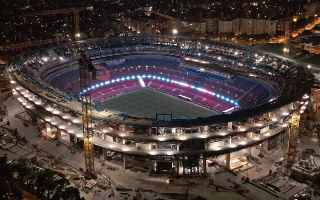
Spain: Test for FC Barcelona’s stadium — after the Alavés chaos, it’s time for Atlético
FC Barcelona return to league action on Tuesday, hosting Atlético Madrid. It will be only the third match played at the renovated Spotify Camp Nou and another key test for the stadium’s infrastructure, which — despite its partial opening — still requires technical and organisational improvements.
-
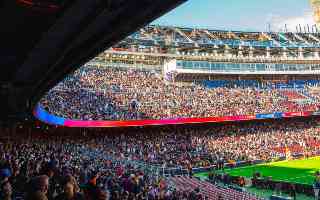
Spain: Camp Nou opens after a year of delay. Euphoria mixed with criticism of the project
On Friday, November 7 at 11:00 a.m., FC Barcelona held an open training session at Spotify Camp Nou, attended by 21,795 fans. After 894 days of closure, the team officially returned to its historic home.
-
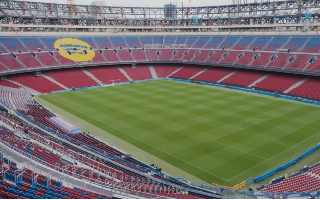
Spain: No approval to reopen Camp Nou. Barça moves to Montjuïc
After nearly two and a half years of reconstruction, FC Barcelona invited the media for the first tour of the renovated Spotify Camp Nou. Although the venue has undergone major changes, the City Council has refused to grant the club permission to host a match this coming Sunday.
-
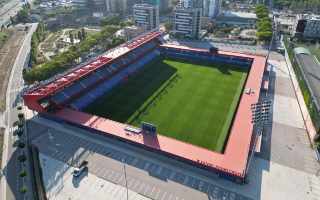
Spain: Barça chooses second team’s Estadi Johan Cruyff!
FC Barcelona ruled out Montjuic and Montilivi for the start of La Liga, and in the absence of permission to open the Camp Nou, chose the home of their reserve team. La Liga has already inspected the venue, but the insufficient capacity of the Estadi Johan Cruyff could be a problem.
-
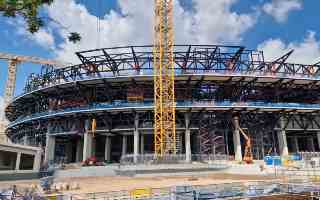
Spain: Barcelona is fighting to return to Camp Nou. Still, the club has a backup plan
FC Barcelona is counting down the days to the scheduled return to Camp Nou. The problem is that the stadium still lacks the required permits, and some construction work remains unfinished.
-
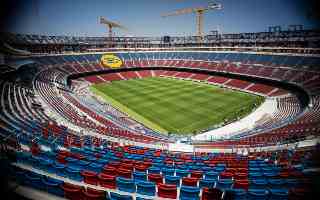
Spain: Spotify pressures Barça. Camp Nou’s future unclear, minimal section for ultras
FC Barcelona is counting down the days to the start of the new La Liga season in front of its home fans, but the return is still uncertain. The stadium’s renovation faces further delays, the club is struggling to obtain an operating license, and relations with its main sponsor remain tense.
-
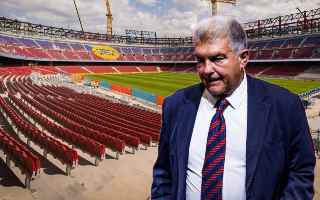
Spain: Years of promises at Camp Nou – every mistake made by Laporta
From the very beginning, the redevelopment of Camp Nou took shape as a never-ending story. Although FC Barcelona repeatedly announced their return to the stadium, each new chapter of this saga ended in a broken promise. What did this journey look like from the very start?
-
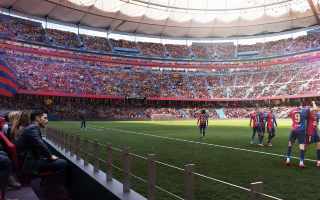
Spain: Luxury matchday experience and controversies around the Camp Nou pitch
FC Barcelona, together with the renovation of Spotify Camp Nou, introduced an innovative concept aimed at completely changing how football is experienced – Barça Hospitality. This new approach is not just about watching the game but living it in a unique, emotional way.
-
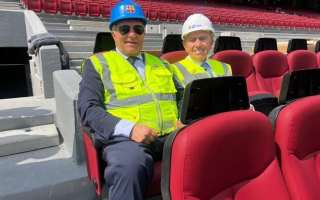
Spain: Visit to Camp Nou and launch of Barça Mobile network
The day after the victory over Borussia Dortmund in the Champions League, FC Barcelona president Joan Laporta, accompanied by Limak construction company chairman Nihat Özdemir, CEO Ebru Özdemir, and other delegates, visited the Spotify Camp Nou construction site to personally observe the recent progress.
-
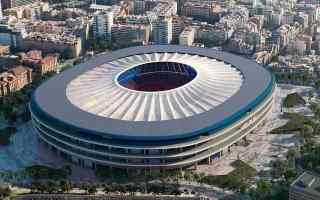
Spain: Iconic chapel will return to Camp Nou
Legends of FC Barcelona prayed here before stepping out onto the pitch, and John Paul II visited it after the Mass which still holds the record for attendance at Camp Nou. The small chapel, once a club storage room, will return to its place with the completion of work on the stadium.
-
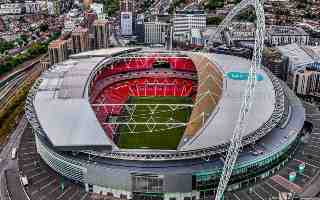
Spain: El Clásico at Wembley? Barcelona unsure about return to Camp Nou
Work on Spotify Camp Nou is progressing rapidly with the aim of resuming matches this season. According to Mundo Deportivo, there is optimism about the possibility of returning by the time of El Clásico.
-
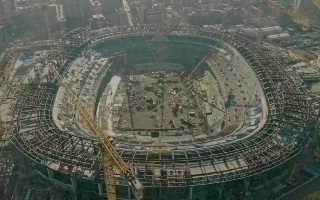
Spain: Choice of stadium for El Clásico is getting closer
Although much has been said about the possibility of playing the league Clásico outside Barcelona—or even abroad—the matter has yet to be formally addressed by the club’s board.
-
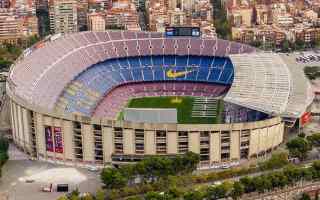
Spain: FC Barcelona sells pieces of the old Camp Nou
An extraordinary auction organised by FC Barcelona will begin on 23 January. Fans of the Catalan Pride will have the chance to get their hands on unique items, including legendary football lockers, corner flags or penalty points from the famous pitch.
-
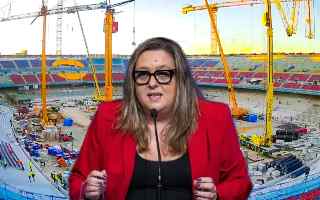
Spain: Vice president of FC Barcelona on return to Camp Nou
The Camp Nou redevelopment is underway and fans are eagerly awaiting their return home. There is still no clear date for the completion of the works. Vice president Maria Elena Fort, in a radio interview, addressed the latest challenges and the club's current situation.
2024
-

Spain: Santiago Bernabéu closest to hosting 2030 World Cup final!
FIFA has officially confirmed Spain, Portugal, and Morocco as hosts of the 2030 World Cup. The decision on which stadium will host the final is expected soon, with Santiago Bernabéu in Madrid emerging as the favorite.
-
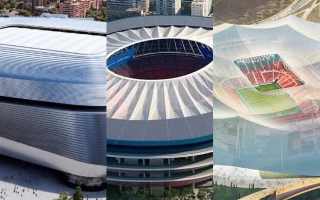
FIFA: Madrid, Barcelona, Morocco - three locations for 2030 World Cup final
The race to host 2030 World Cup finals is on, and three cities remain in play: Madrid, Barcelona and Benslimane. Each offers unique strengths, making FIFA's choice potentially one of the toughest ever. What is in favour of each candidate?
-
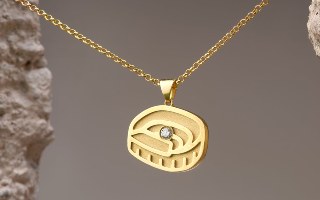
Spain: Bernabéu and Camp Nou for sale in pieces
The stadiums of the two eternal rivals, Real Madrid and FC Barcelona, are undergoing extensive renovations. The works not only reopen the debate about who has the best stadium in Spain, but also open up a unique opportunity for fans to buy parts of the two emblematic grounds.
-

Spain: Camp Nou inaugurated on this day 67 years ago
September 24, 1957, sunny Barcelona. For the first time in history the world saw Camp Nou filled with fans. These spectators were watching a game that included the FC Barcelona team and... a Warsaw XI.
-
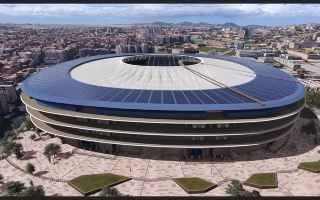
Spain: More steps towards the Camp Nou “americanisation”
FC Barcelona are enjoying further success during their preparation period in the USA, visiting stadiums whose model the Blaugrana are trying to implement in the construction of the new Camp Nou. Meanwhile, work on the construction site is still underway, VIP seats are almost sold out and the club has formed another partnership.
-

When will FC Barcelona return to Camp Nou? Conflicting information from club and city
FC Barcelona's vice president, Elena Fort, has recently become active in the media to emphasize the efficiency of the company Limak and the adherence to deadlines, aiming for the club to return to Camp Nou in December, despite concerns expressed by the Barcelona City Council.

 StadiumDB
StadiumDB